Right on the edge of Zaragoza’s historic centre but with a distinctly different vibe, La Magdalena’s hotel, eating out and nightlife options make it the perfect place to start and end your day.

Mudejar style on San Carlos Borromeo (Photo: Paul Stafford for TravelMag.com)
Hemmed in by the Ebro River, its small Río Huerva tributary, and the historic city centre, La Magdalena offers a blend of multiculturalism, history and some wonderful examples of the fine religious landmarks common throughout Zaragoza. It is seen as the coolest neighbourhood in Zaragoza (earning the nickname ‘the Zaragozan Malasaña’), where bar clientele spill out onto the low-traffic streets, and where live music and theatre bring a youthful, creative vibrancy to the city.
Yet despite this current status, La Magdalena was recently considered a run-down, unattractive part of the city, oft overlooked for the broad plazas and tight network of tapas bar-lined streets in the centre. But change can come quickly to neighbourhoods that attract the attention of creative, young professionals seeking that rare combination of a great location and cheap rents. Within a short space of time, the effects of this new lease of life were translated to the streets and the energy of La Magdalena.
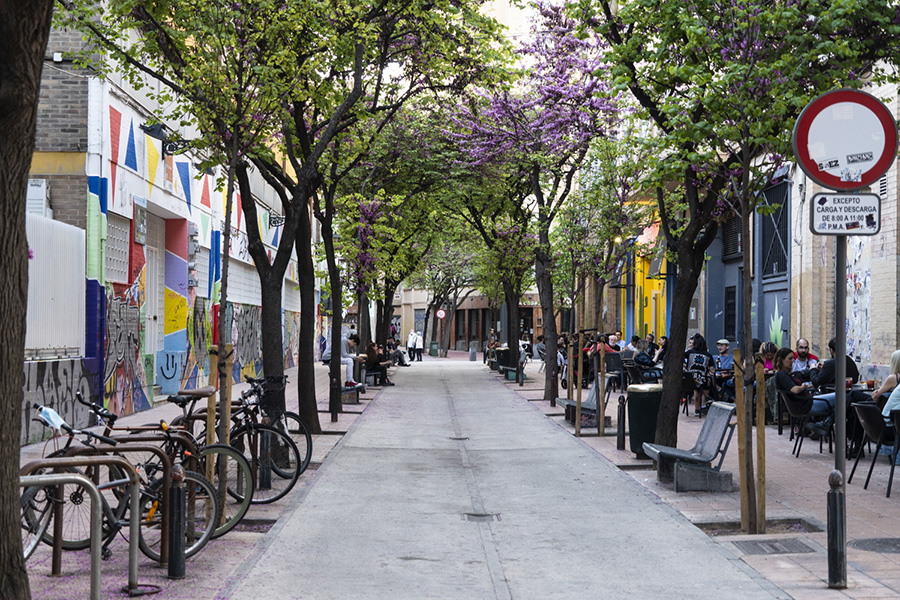
A street in La Magdalena (Photo: Paul Stafford for TravelMag.com)
These days, you might come for one of the galleries or museums during the day or happen to find yourself exploring the streets after visiting the magnificent Catedral del Salvador de Zaragoza (Pl. de la Seo), located on the edge of the neighbourhood. Or perhaps during the evening, when the streets fill with diners and revellers as the city’s trendiest nightlife spots open their doors, giving the best sense of La Magdalena’s alternative credentials.
Things to Do
If you’re drawn to Zaragoza for the religious architecture (you’ll find some of the finest examples in the world here), then be sure to start your exploration of La Magdalena at the Royal Seminary of San Carlos Borromeo (Pl. de San Carlos). The gold Churrigueresque altar and lavish interior were installed during the 18th century. Prior to its royal and Catholic connections, this was part of a pre-Inquisition Jewish Quarter of the city.
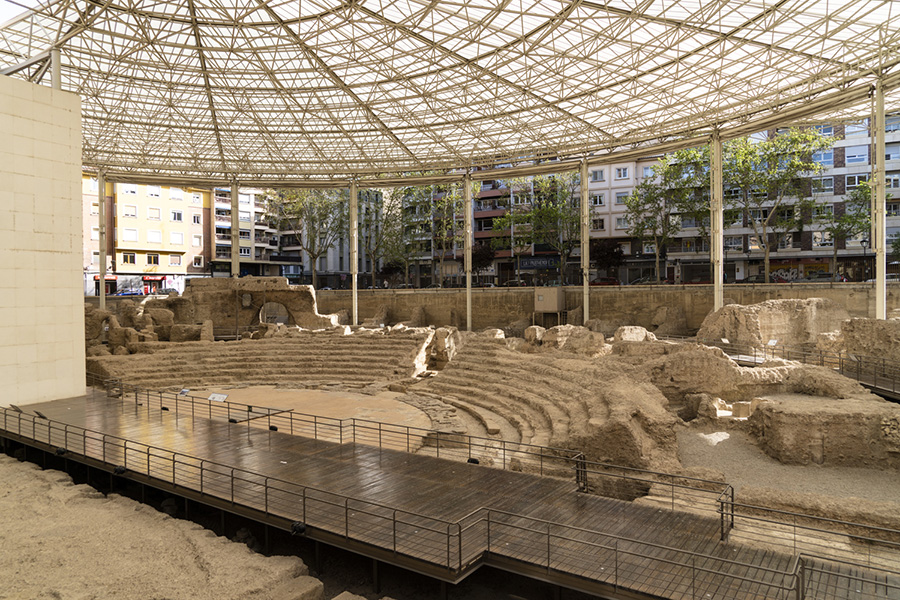
Caesaraugusta Roman Theatre (Photo: Paul Stafford for TravelMag.com)
Two blocks closer into the city centre is the Museo del Teatro de Caesaraugusta (C. de San Jorge, 12), a Roman arena from the 1st-century CE, highlighting the historic significance of Zaragoza. Not only was it an important trade centre during Roman rule, but it is one of the biggest cities from that era located away from the coasts in Spain. The ruins can be seen from the street through the railings, while an informative museum is open from Tues-Sun, closing for a break in the afternoons.
Long after the fall of Rome, the Moors moved into Spain, imprinting their Islamic aesthetics onto Spanish style. North of Andalusia, Mudejar architecture is not as commonly found in Spain. In fact, some of the best examples outside of that southern region can be found in Zaragoza and other nearby towns. A great example of the intricate brickwork typical of the style is found in La Magdalena at the Iglesia de Santa María Magdalena (Pl. la Magdalena), after which the neighbourhood is named. Its stone, four-sided belltower is visible from many parts of the city, built with relief brickwork and glazed ceramics arranged in decorative patterns.
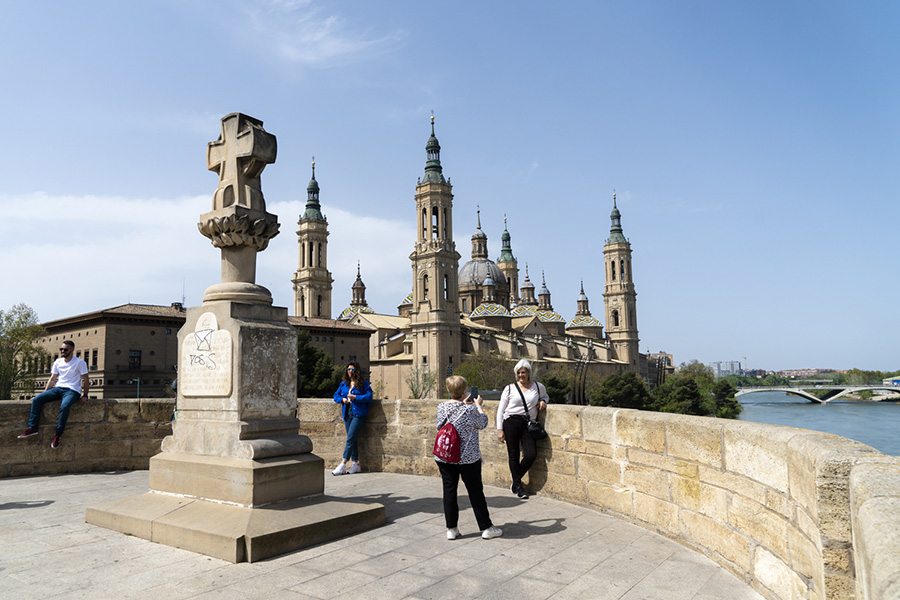
View from Puente de Piedra (Photo: Paul Stafford for TravelMag.com)
Another popular pastime in Zaragoza is to explore the Ebro River. Pathways suitable for walking and cycling line both banks of the river, with multiple bridge crossings and parks available to keep you going for many hours. For a good circular loop of La Magdalena, start at the beautiful, honey-stoned Puente de Piedra (which offers the best views of the Basílica de Nuestra Señora del Pilar), then follow the river east, cutting inland to Parque Bruil on the eastern edge of the neighbourhood.
Where to Stay
While the majority of Zaragoza’s hotels are located in the city’s historic core, a smattering of worthy accommodation spills out into La Magdalena, especially on its western edge. The Silken Reino de Aragón (C. del Coso, 80) is one such example, offering access in minutes to both the historic centre and La Magdalena. The hotel has an airy, marble-clad Art Deco lobby, leading to crisp, modern rooms with wooden flooring and wicker chairs. There’s also a car park (additional fee), a bar and a gym on site.
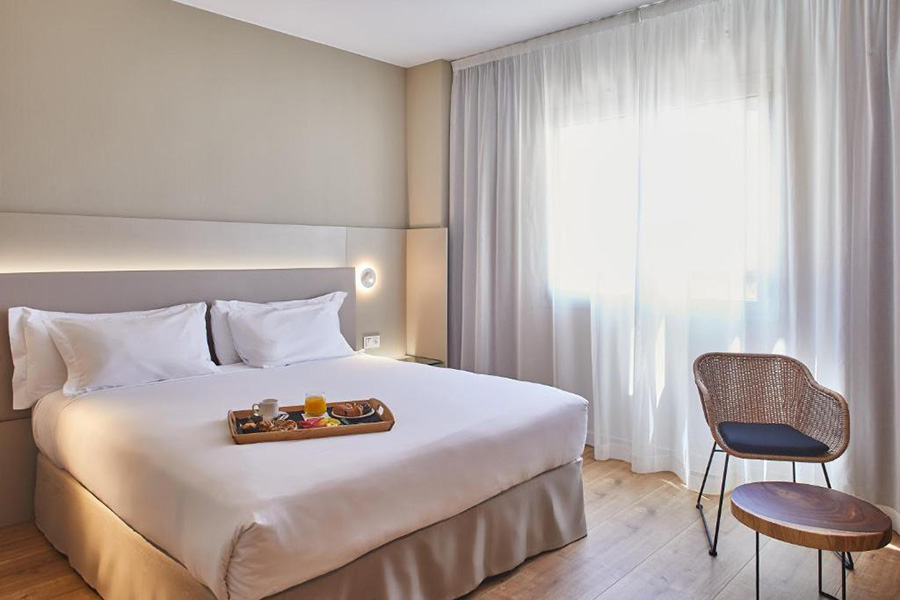
Silken Reino hotel (Photo: Silken Reino via Booking.com)
For a brand with a reputation for decent quality, cleanliness and budget-conscious pricing, the ibis Styles Zaragoza Ramiro I (C. del Coso, 123) is a reliable bet. Beds are comfortable, utilitarian rooms are decked out in Ikea-esque furniture, while the bright pops of colour give it a friendly ambience. The hotel also enjoys an excellent location, right around the corner from Royal Seminary of San Carlos Borromeo.
Eat & Drink

Spanish tortilla (Photo: Sayuri Miss via Flickr / CC BY 2.0)
La Magdalena is the location for the best-loved tapas bar crawl in Zaragoza. Known as el juepincho, this popular, freeform route weaves through La Magdalena, ending up in the streets surrounding Plaza San Miguel every Thursday, making the most of the special offers (customarily a tapa and a drink for €2) at roughly 80 different tapas bars in the neighbourhood. Drinks include a house wine, a caña of draught beer, or water, and the juepincho usually starts at around 6pm until late.
Bar Entalto (C. Mayor, 50) is a great starting point, specialising in their generously sized croquetas, stuffed with classics, such as bacalao (cod) and ham, as well as local iterations, such as bacon and Roquefort cheese. If you’re visiting outside of the busy juepincho and can’t decide which to try, the croquette sharing platters are an excellent choice. Draught beers as well as bottles of local craft ale are a popular accompaniment.
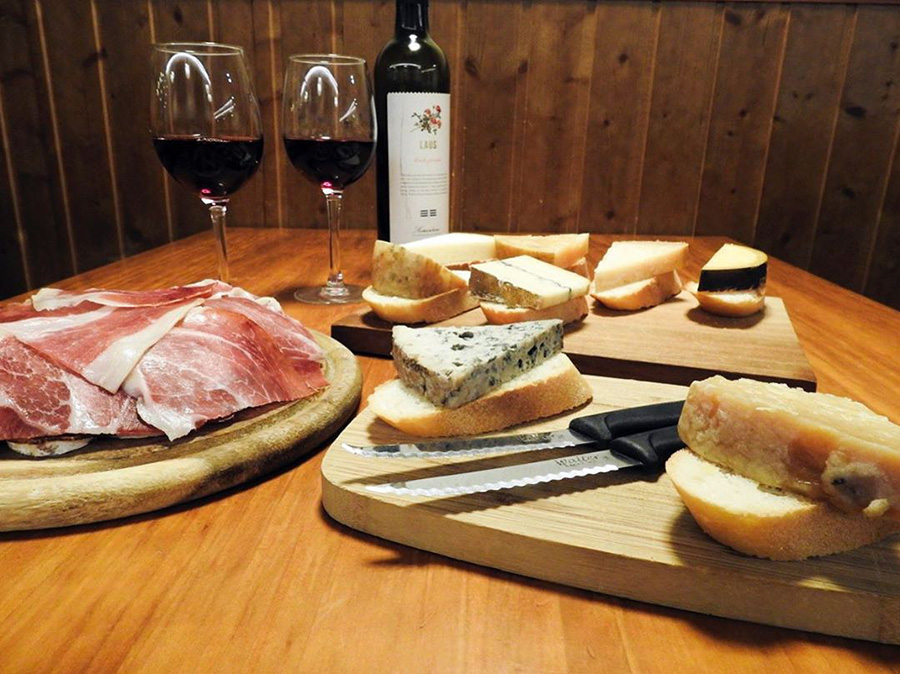
Cheese galore at Bar Estudios (Photo: Bar Estudios via Facebook.com)
Vegetarians might feel more at home in Bar Estudios (C. de los Estudios, 15), which specialises in cheese tapas, making it particularly popular during the juepincho. Served atop a slice of crusty bread, you’ll find a large wedge of goat cheese, Manchego or one of the well over a dozen other cheeses from Aragon and elsewhere in Spain. Naturally, red wine is a popular accompaniment here.
Spanish tortilla is another highly sought after snack for visitors to the country, and while it’s a difficult dish to get wrong, the Museo de la Tortilla (C. de la Cadena, 18) has been getting it very right since 1988. You might also be surprised to discover that there are many possible types of tortilla, 24 of which are served here, from a dependable potato and onion option, to the rather more challenging pig brain tortilla.
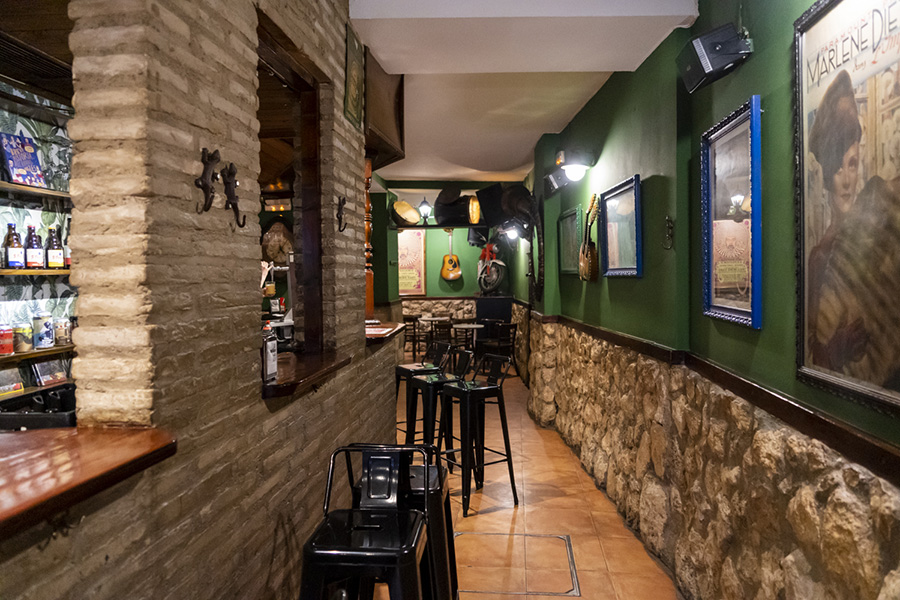
Inside El Refugio del Crapula (Photo: Paul Stafford for TravelMag.com)
El Refugio del Crápula (C. Mayor, 56) is a great rock bar in the heart of La Magdalena. Local musicians post up either inside or outside with their drums, guitars and amps, bringing live rock music to the streets. The interior is a quirky melange of classic rock posters, instruments and there’s even a motorbike pinned to one wall.
To get a dose of traditional Spanish charm, the décor of El Fuelle (C. Mayor, 59) evokes an agrarian era through rustic décor, such as wooden ploughing equipment and a huge wagon wheel light fixture. Aragonese barbecued meat dishes are the staple offering here, such as the ternasco (milk-fed lamb served over potatoes), garlic soup, and plates of morcilla (Spanish blood sausage) and chorizo. Set menus are also available.

Rustic El Fuelle (Photo: Paul Stafford for TravelMag.com)